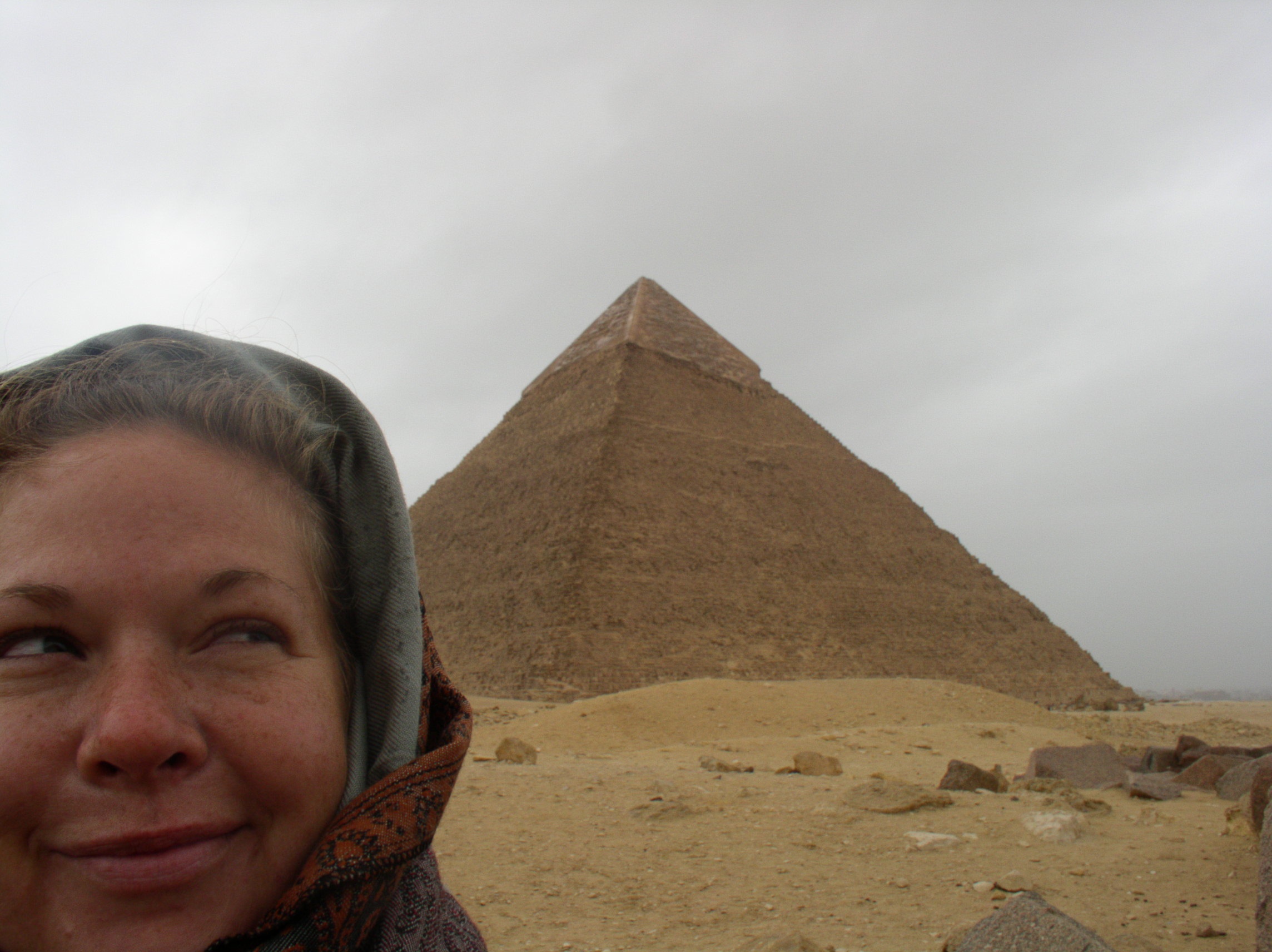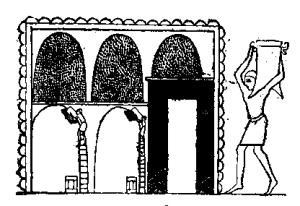It takes a lot to get me, an ancient historian, to be interested in, much less talk about, modern politics. Enter Ben Carson.
Earlier this week, after the commencement speech from 1998 that records U.S. GOP Presidential candidate Ben Carson stating his (completely off the wall) opinion that the Great Pyramids of Giza were in fact “Joseph’s Granaries” came to light, a journalist from a major news network reached out to me. They were seeking someone who could:
…explain, in professional and expert terms, why we know that the pyramids were built for the interment of pharaohs. And not, as one candidate has been saying, to store grain ahead of a augured famine.
The questions were emailed and answered, but then yesterday the controversial news about Carson and his representation of his relationship with West Point exploded and the pyramid story was set aside. It may yet appear on the aforementioned network, but in case it gets lost on that channel, the questions I received (shown in blue) & answers given, seemed worth posting since, apparently, they were deemed worth asking. These facts have also be stated in far more depth on numerous other channels, and Carson’s granary “theory” has been thoroughly trounced (see this article from the BBC that discusses the history of the “Joseph’s granaries” theory, this article from Forbes about how much the Egyptian themselves recorded, another Forbes article that highlights the economic import of the pyramids, this fellow Egyptologist’s podcast on why the structures were built, etc.). However, since there seems to still be some confusion on this matter, here’s another voice of reason.
11-5-2015
Re: Ben Carson and the Great Pyramids
So my questions for you!
Why were the pyramids built and by whom (and when)?
The Great Pyramids of Giza, the three iconic pyramids sitting on the southwestern edge of Cairo, are only a few of the myriad pyramids documented in Egypt. The shape was actually used for royal mortuary monuments in the region for thousands of years, although the primary period of pyramid construction dates from approximately 2600 BC through 1800 BC.
The three main Giza pyramids were constructed for a series of kings in a period that modern Egyptologists refer to as the Old Kingdom, with the earliest (and largest) being begun around 2550 BC for the pharaoh Khufu. Khufu’s son, Khafre, and his grandson, Menkaure, are the owners of the other two major pyramids. They were clearly intended as part of the royal burial burial complex; we have hundreds of years of architectural development that precede the marvels of the Giza plateau that clearly demonstrate this fact. Please see my Khan Academy essays on the Giza plateau and the Great Pyramids for further general discussion on this topic. If one requires more evidence, sarcophagi (massive stone coffins) were discovered within both Khufu’s burial chamber (at the precise center of the pyramid, by the way…lots of precision for a silo) and the burial chamber of Menkaure, although all three structures were thoroughly looted well before modern times.
Contrary to another semi-popular belief more commonly held than Carson’s, but that still continues to be perpetuated despite the evidence, the pyramids were constructed by Egyptians. There is no archeological evidence that large numbers of slaves of any origin were involved in the construction. Rather, the workforce was made up of layers of full-time, skilled artisans, overseers and managers, and seasonal conscripts from all over Egypt. The pyramids were major public works projects, viewed through a certain lens, as that ‘season’ was during the Nile’s annual flood when the fields that usually needed tending instead needed to lie fallow.
What purpose did they serve — was it to inter dead pharaohs or for siloing food for the people?
That pyramids were built for dead pharaohs is not a matter of debate. These structures were designed and executed as part of the royal mortuary complex; we have extensive textual and archaeological evidence to prove this fact. As for storing grain, the chambers within the almost entirely solid pyramids are few and quite small.
Interior of the Pyramid of Khufu. CC
It would be highly inefficient to use these massive mountains of stone for grain storage, especially considering the cost of the material and the fact that the diagram above represents one of the the roomiest interior spaces in any pyramid. Many are completely solid piles of stone with chambers dug out underneath. To be clear—pyramids are not hollow.
How do we know this?
The ancient Egyptians were kind enough to write it down.
Besides the mass of archaeological evidence, the numerous similar structures to compare them to, and the obvious lack of the open storage space within the pyramids, we also have depictions of granaries from contemporary tomb scenes; they are very different in shape.
We know what they were for because the ancient Egyptians told us what they were for. They extensively documented a great deal about many things, in fact, and the purpose of pyramids was well defined. This is not to say that there are no unsolved questions regarding the pyramids and their function in Egyptian culture–of course there are. There always will be; that is the perpetual wonder of Egyptology. There are always going to be questions, but Carson’s theory is not only absurd, but easily disproved by a marginally clever child. You don’t use solid structures to store stuff.
Related — what did they look like on the inside? Were there spaces for food and such?
Much of the inside is solid stone, so I’ll focus on where there are open spaces. While later royal pyramids had walls covered in carved texts, the three Great Pyramids of Giza are basically bare. Within the pyramid of Menkaure, there are carved recesses in the walls, but otherwise the interiors of these monuments are devoid of decoration.
Symbolic food offerings would have absolutely been part of the burial rituals and were required in the ongoing worship of the deified deceased pharaoh, but would have occurred in an entirely different area of the mortuary complex than the pyramids. Regardless, it is essential to recognize that small food offerings placed in the tomb for the deceased are very different from using the space to store large amounts of food intended for the living.
Is there any chance Carson has it right, or do you recognize this as a strictly biblical interpretation (not just that he cites the Old Testament, but in how he characterizes the pyramids’ use.)
No.
His interpretation is based on no facts, scientific or otherwise, but instead on Medieval mythology – “Joseph’s granaries” appears in the literature as early as the 6th century AD (by people who plainly made it up), the pyramids were explicitly depicted as granaries in 12th century mosaics in a dome at St. Mark’s basilica in Venice, and the myth was reinforced by a popular 14th century travelogue (which also, quite laughably, claimed the structures to be “completely full of snakes”).
Egyptology is a science; just because the culture seems very mysterious to a willfully ignorant layperson, that does not mean that specialists and experts in the field don’t have verified, quantifiable answers about many of those ‘mysteries’. There is a plethora of easily available resources that thoroughly and scientifically debunk this antiquated interpretation; one does not have to dig into scholarly sources to investigate this question.
Is it possible he’s referencing other pyramid-like structures — were there a reasonably similar set of structures used for what he is describing?
Granaries in ancient Egypt were quite different in form. A model granary from @ 2200 BC and now in the British Museum, London, shows the typical (and repeatedly attested) design. Granaries were often capped with high, domed silos, but these are far from pyramidal in shape, and would have been constructed of mud brick rather than stone. Granaries were significantly smaller than any pyramid, and (importantly) were clearly hollow, a rather necessary feature of a storage structure. Here is an image of a tomb scene showing men pouring grain into the top of such silos:
Egyptian granaries. CC
I’ve read that the pharaohs were interred with grains for the afterlife. Is that true? Would they have been stored then in the way Carson describes — hermetically sealed, etc?
No.
Grain was commonly interred with the deceased, royal and non-royal. It was a very important element of the tomb offerings designed to provide for the spirit of the deceased in the afterlife. The living generally stored their household grain in sacks, baskets, or jars; grain deposited in the tomb for the deceased was generally interred the same way.
There are no ‘hermetically sealed compartments’ in any pyramid. The Great Pyramid, and others, had a series of massive stone slabs that acted as a lock and closed off passage into the pyramid. These were slid into place as the last of the priests and workmen exited the structure for the last time. However, these were one-way locks; the only way to get back in after the stones slid into place was to tunnel around them. Again, not terribly efficient for grain storage.
Honestly, it amazes me that this is even an actual question, or that there is any true confusion on this particular point, but just in case there is…here you go! Can we go focus on some actual questions now?




